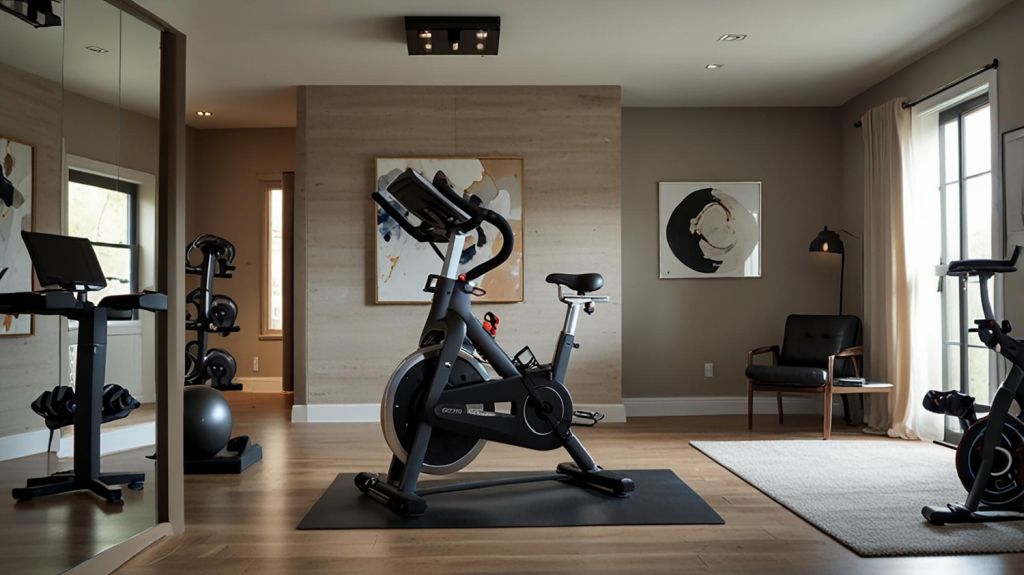How to Build an Effective Home Gym on a Budget
Staying fit has never been more important. With the modern hustle and bustle, finding time to hit the gym can feel like another chore on your never-ending to-do list. Many people are realizing the convenience of working out at home, and the good news is, building a home gym doesn’t have to cost a fortune. Whether you’re a seasoned health enthusiast or a complete beginner, setting up an effective workout space can be a game-changer for your fitness routine.
Understanding Your Fitness Goals
Before you start buying equipment or rearranging furniture, it’s crucial to define your personal fitness objectives. Are you aiming for weight loss, muscle gain, or just overall health improvement? Your goals will guide your equipment choices and workout routines. For instance, someone focused on building strength might prioritize weights, while a cardio enthusiast could lean towards jump ropes or a treadmill.
Nutrition plays a pivotal role in achieving fitness goals, and intermittent fasting is gaining traction as an efficient method to boost metabolism and enhance performance. Pairing exercise with proper nutritional strategies can maximize the benefits of your home workouts. Beginners in nutrition should consider exploring meal planning as part of their fitness plan.
It’s not just about physical fitness; holistic health encompasses mental and emotional well-being as well. Incorporating meditation or yoga can help create a balanced routine that addresses both body and mind. A clear understanding of your goals helps maintain focus and motivation.
Selecting the Right Equipment
Creating a home gym begins with selecting the right equipment. Start with essentials that cater to a variety of exercises, such as a yoga mat, resistance bands, and adjustable dumbbells. These items can support a wide range of workouts from strength training to flexibility exercises.
For those on a tight budget, there are numerous alternatives that can still provide a comprehensive workout. Bodyweight exercises like push-ups and squats require no equipment yet offer excellent strength-building potential. Household items, such as filled water bottles or backpacks loaded with books, can substitute for traditional weights.
Investing in second-hand equipment is another cost-effective approach. Online marketplaces often have gently used gym gear at a fraction of the price. Remember, the best equipment is what you’ll consistently use, so prioritize items that align with your fitness goals.

Designing Your Space
No matter how much square footage you’re working with, designing a functional home gym is achievable with a bit of creativity. Start by assessing the available space and thinking about how you can maximize it. Consider multi-use equipment, like a foldable bench or wall-mounted pull-up bar, to save room.
Organize your layout to ensure safety and efficiency. Keep equipment within easy reach and maintain clear pathways to prevent accidents. A motivating environment boosts your workout dedication, so add elements that inspire—this could be a mirror, motivational quotes, or a small sound system for your favorite workout playlist.
Lighting and ventilation also play a part in creating an inviting space. Natural light can energize your workouts, while proper airflow prevents the area from feeling stuffy. Your home gym should be a place you enjoy spending time in, so personalize it to suit your taste and preferences.
Creating an Effective Workout Routine
An effective home workout routine balances different types of exercise. Incorporate cardiovascular activities like jumping jacks or jogging, strength training with weights or resistance bands, and flexibility exercises such as yoga or Pilates. This variety ensures that all aspects of fitness are covered, promoting well-rounded health.
Intermittent fasting can complement your workout schedule by enhancing energy levels and accelerating fat loss. Planning meals around your exercise routine can optimize performance and recovery. Beginners should start with simple fasting windows and gradually increase duration as their body adapts.
Structure your workouts to match your weekly schedule, allowing for rest days to prevent burnout. Consistency is key, so aim for a routine that’s realistic and sustainable. Tracking progress, whether through an app or journal, can provide motivation and highlight areas for improvement.
Conclusion
An effective home gym is more than just a collection of equipment; it’s a commitment to a healthier lifestyle. By taking the time to understand your fitness goals, selecting the right gear, and designing a motivating space, you lay the foundation for a long-term fitness journey. The benefits of exercising at home extend beyond convenience, offering a tailored approach to health and well-being.
Remember, building a home gym is a personal process—tailor it to your needs and preferences. Start small, celebrate each milestone, and enjoy the process of crafting a space that empowers you to achieve your fitness dreams. Ready to take the first step? Gather your ideas, and begin your home gym transformation today!







